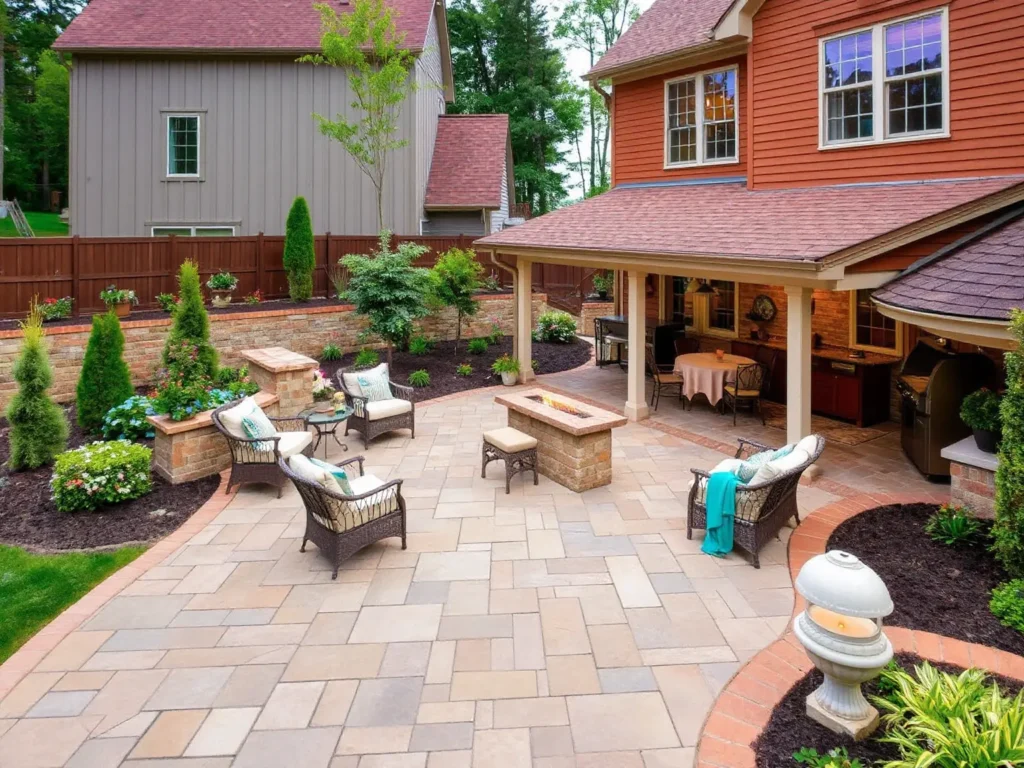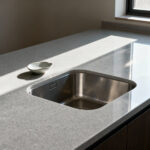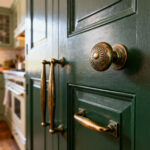Imagine stepping into your backyard and finding a harmonious blend of nature and human-made elements, where every stone and structure tells a story of thoughtful design and sustainable living. This is the essence of backyard hardscaping—an art form that transforms outdoor spaces into functional works of art, much like how urban planners reimagine cityscapes.
As an urban planner turned writer, I’ve witnessed firsthand how the right hardscaping can breathe new life into neglected spaces. Whether you’re looking to create a cozy nook for morning meditation or design an expansive patio for lively gatherings, backyard hardscaping offers endless possibilities to elevate your outdoor living experience.
In this complete guide to backyard landscaping, we’ll explore the world of hardscaping, from foundational elements to finishing touches. We’ll delve into popular options, material choices, and the pros and cons of various approaches. So, grab your favorite beverage, find a comfortable spot, and let’s embark on a journey to transform your backyard into a stunning retreat that reflects your style and meets your needs.

Key Takeaways
Before we dive deep, let’s touch on some essential points:
- Understanding hardscaping basics is crucial for creating a solid foundation for your backyard design.
- From patios to retaining walls, hardscaping offers diverse options that can be tailored to your unique needs and aesthetic preferences.
- Choosing the right materials—be it stone, brick, or concrete—is akin to selecting the perfect palette for a painting.
- Like any good design, hardscaping comes with its own set of pros and cons, which we’ll carefully weigh.
- Your hardscaping project will require careful financial planning, much like city planners working within budget constraints.
Remember, successful hardscaping is about finding the perfect balance between form and function, much like designing a well-planned city.
Hardscaping Basics
Hardscaping is the art of incorporating non-living elements into your landscape design. Think of it as the yin to soft scaping’s yang—while soft scaping focuses on lush greenery, hardscaping brings in solid, enduring structures that shape your outdoor living space.
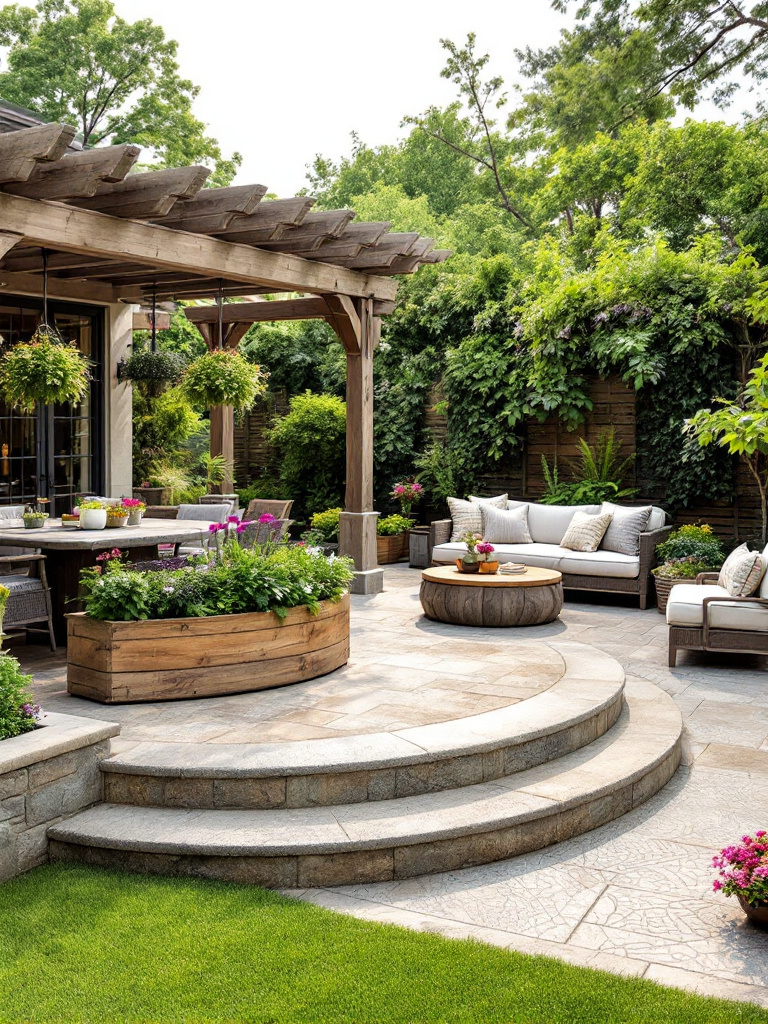
Benefits of Hardscaping
- Enhanced Property Value: Well-executed hardscaping can increase your property value by up to 10%.
- Reduced Maintenance: A thoughtfully designed hardscape can cut your lawn care and plant upkeep needs by up to 50%.
- Improved Functionality: Hardscaping creates defined spaces for various activities, much like zoning in urban planning.
- Aesthetic Appeal: Well-designed hardscaping adds visual interest and structure to your landscape.
- Durability: Hardscape features, when properly installed, can withstand various weather conditions and heavy use.
Common Hardscape Features
- Patios and Decks: These are the cornerstones of outdoor living spaces, providing flat, stable areas for furniture, grills, and gathering.
- Walkways and Pathways: These guide movement through your yard, connecting different areas and adding visual interest.
- Retaining Walls: Not just functional for managing soil erosion, retaining walls can also create visual interest and define different areas of your yard.
- Water Features: From simple fountains to elaborate ponds, water features add a soothing element to your hardscape design.
- Fire Pits: A popular addition to many backyards, fire pits create a cozy gathering spot and extend the usability of your outdoor space.
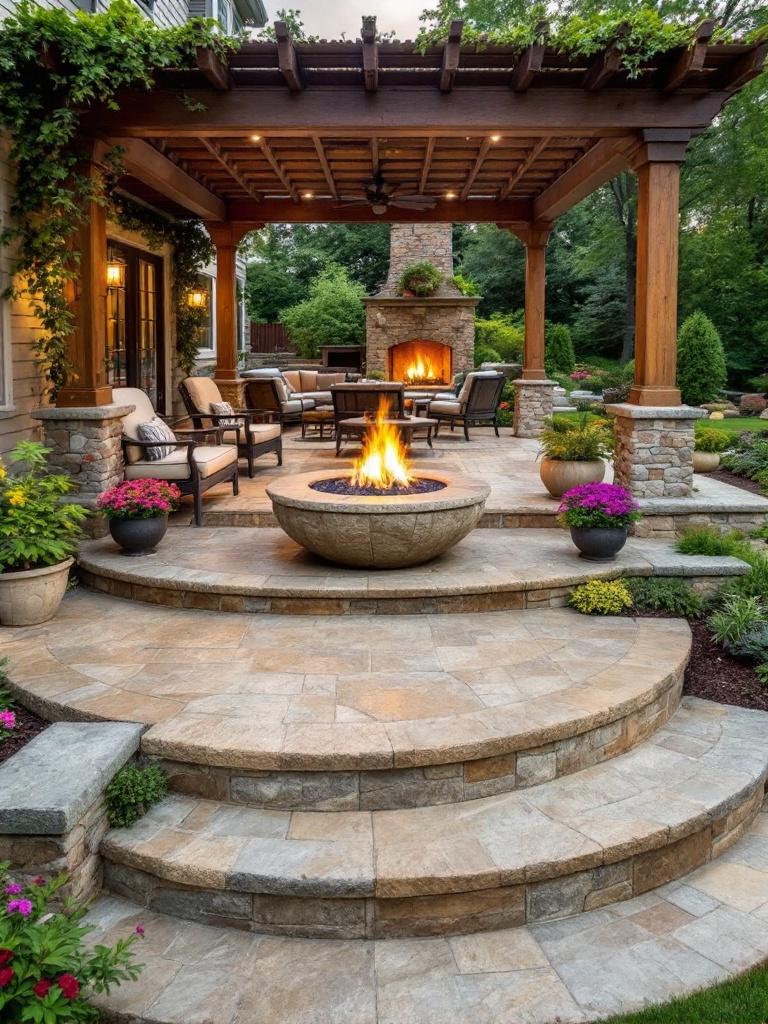
Pro Tip: Before starting any hardscaping project, always check local building codes and regulations. Some features, particularly those involving water or fire, may require permits or have specific safety requirements.
Popular Hardscape Options
Let’s explore some popular options that can transform your backyard into a functional and aesthetically pleasing outdoor living space.
Patios and Decks
Patios and decks are the heart of many backyard hardscaping projects, serving as the main stage for outdoor living and entertainment. When designing a patio or deck, consider:
- Material Choice: Options range from natural stone and concrete pavers to wood and composite materials.
- Size and Shape: The dimensions should be proportional to your home and yard size.
- Integration with Landscape: Ensure your patio or deck complements the existing landscape and architecture of your home.
- Functionality: Think about how you’ll use the space.
Pro Tip: Consider adding built-in seating or planters around the edges of your patio. This maximizes space and creates a seamless transition between your hardscape and the surrounding landscape.

Walkways and Pathways
Walkways and pathways are the arteries of your backyard hardscape, guiding movement and connecting different areas of your outdoor space. Key considerations include:
- Material Selection: Popular options include gravel, pavers, flagstone, and brick.
- Width and Curvature: The width should accommodate comfortable passage, typically 3-4 feet for primary paths.
- Lighting: Incorporate low-voltage landscape lighting along your paths for safety and ambiance during evening hours.
- Edging: Consider adding edging materials to define your pathways clearly and prevent material spread.
Walls and Retaining Structures
Retaining walls serve both functional and aesthetic purposes in backyard hardscaping. They can help manage soil erosion, create level areas on sloped terrain, and add vertical interest to your landscape design. Consider:
- Purpose: Determine whether your wall is primarily functional or decorative.
- Material Options: Common choices include stone, brick, and concrete blocks.
- Height and Length: The dimensions of your wall will depend on its purpose and the specific needs of your landscape.
- Drainage: Proper drainage is crucial for the longevity of your retaining wall.
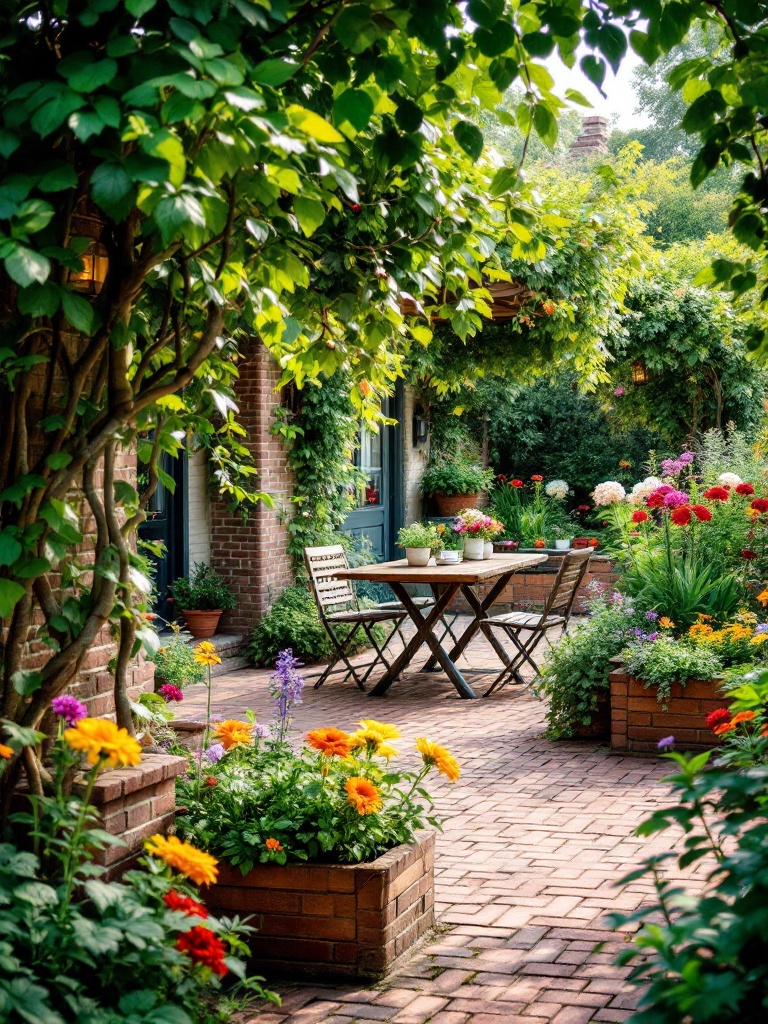
Outdoor Living Spaces
Creating dedicated outdoor living spaces is a key trend in backyard hardscaping. Elements to consider include:
- Outdoor Kitchens: From simple grill stations to fully-equipped cooking areas.
- Fire Features: Fire pits or outdoor fireplaces create cozy gathering spots.
- Shade Structures: Pergolas, gazebos, or shade sails protect from the sun.
- Water Features: Fountains, ponds, or small waterfalls add a soothing element to your outdoor living area.
As you plan your backyard hardscaping, remember that the key to success lies in creating a harmonious balance between these various elements.
Material Choices
Selecting the right materials for your backyard hardscaping project is akin to choosing the perfect building blocks for a city. Each material brings its own character, durability, and maintenance requirements to the table.
Natural Stone Varieties
Natural stone adds an organic, earthy feel to your hardscape design. Popular varieties include granite, limestone, slate, and sandstone.
Pros:
- Timeless aesthetic appeal
- Exceptional durability
- Each piece is unique
Cons:
- Can be more expensive than manufactured materials
- Installation may be more labor-intensive
- Some varieties may require sealing for protection
Pro Tip: When using natural stone, consider mixing different sizes and shapes to create a more organic, natural-looking hardscape.
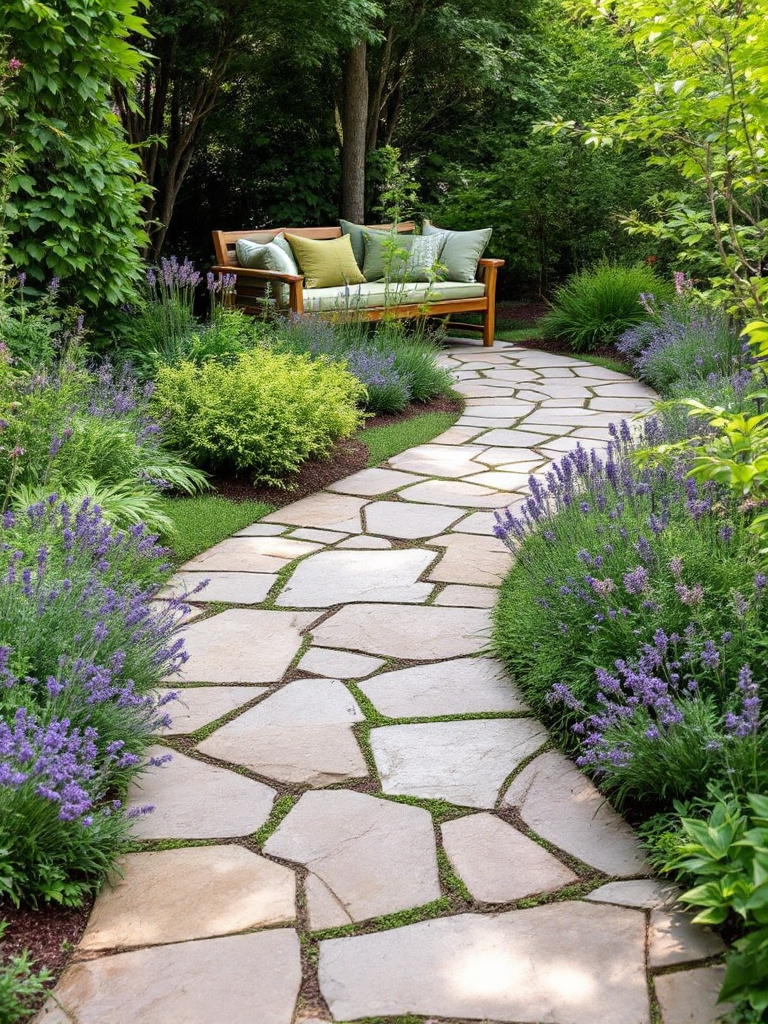
Concrete and Brick Options
Concrete and brick offer a wide range of design possibilities for your backyard hardscaping project. Options include poured concrete, concrete pavers, clay bricks, and concrete bricks.
Pros:
- Cost-effective
- Wide range of colors and patterns available
- Consistent in size and shape, making installation easier
Cons:
- May lack the unique character of natural stone
- Concrete can crack over time if not properly installed or maintained
- Some may find the look less “natural” compared to stone
Pro Tip: Consider using permeable concrete pavers or bricks for your hardscaping project. These allow water to filter through, promoting better drainage and reducing runoff.
Wood and Composite Materials
Wood brings warmth and natural beauty to hardscaping projects, while composite materials offer a low-maintenance alternative that mimics the look of wood.
Pros:
- Wood offers a natural, warm aesthetic
- Composites require less maintenance than wood
- Both can be more affordable than stone or concrete for large areas
Cons:
- Wood requires regular maintenance (staining, sealing)
- Composites may look less natural than real wood
- Both may have a shorter lifespan than stone or concrete
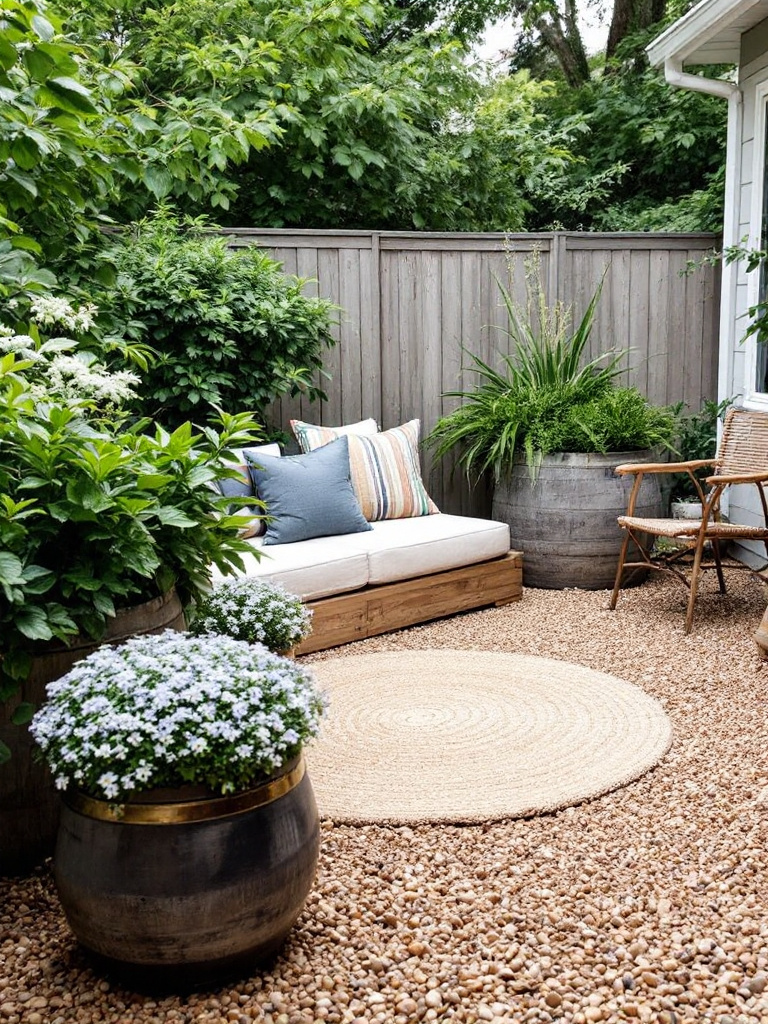
Gravel and Loose Fill
Gravel and loose-fill materials offer an affordable and easy-to-install option for pathways, driveways, and accent areas in your backyard hardscape.
Pros:
- Affordable and easy to install
- Excellent drainage properties
- Can be easily replenished or changed
Cons:
- May shift or scatter, requiring occasional replenishment
- Can be less stable for furniture or walking compared to solid surfaces
- Weed growth can be an issue without proper underlayment
Pro Tip: When using gravel or loose fill, consider installing sturdy edging to contain the material and maintain crisp borders.
Pros and Cons of Hardscaping
Understanding the advantages and potential drawbacks of hardscaping can help you make informed decisions about your backyard project.
Advantages of Hardscaping
- Long-term Durability: Materials like stone, concrete, and brick can withstand harsh weather conditions and heavy use.
- Increased Property Value: Well-executed hardscaping can significantly boost your property’s curb appeal and market value.
- Low Maintenance: Compared to traditional lawns and gardens, hardscaped areas require minimal upkeep.
- Versatile Design Options: Hardscaping offers endless possibilities for customization.
- Extended Outdoor Living: Features like patios, decks, and fire pits allow you to enjoy your outdoor space for longer periods throughout the year.
- Water Conservation: By reducing the amount of lawn and plant life, hardscaping can significantly decrease water usage in your yard.

Potential Drawbacks
- High Initial Costs: The upfront investment for hardscaping can be substantial, especially when using high-quality materials or tackling large areas.
- Environmental Concerns: Excessive hardscaping can increase water runoff and reduce natural habitats for local flora and fauna.
- Heat Island Effect: Hard surfaces like concrete and stone can absorb and retain heat, potentially increasing the local temperature in your yard.
- Limited Flexibility: Once installed, hardscape elements can be challenging and costly to modify or remove.
- Potential for Drainage Issues: Improper installation or design can lead to water pooling or drainage problems.
Environmental Impact
As an urban planner turned writer, I’m particularly attuned to the environmental implications of our design choices. When it comes to hardscaping, consider:
- Water Management: Hardscaping can reduce water usage for plant maintenance but also decrease the natural absorption of rainwater into the soil.
- Habitat Disruption: Extensive hardscaping can reduce available habitats for local wildlife and beneficial insects.
- Material Sourcing: The production and transportation of hardscaping materials can have a significant carbon footprint.
- Heat Absorption: Hard surfaces can contribute to the heat island effect, potentially increasing energy consumption for cooling in nearby structures.
Pro Tip: To minimize environmental impact, consider incorporating “green hardscaping” techniques. Use permeable pavers, install a rain garden to manage runoff, or choose light-colored materials that reflect heat rather than absorb it.
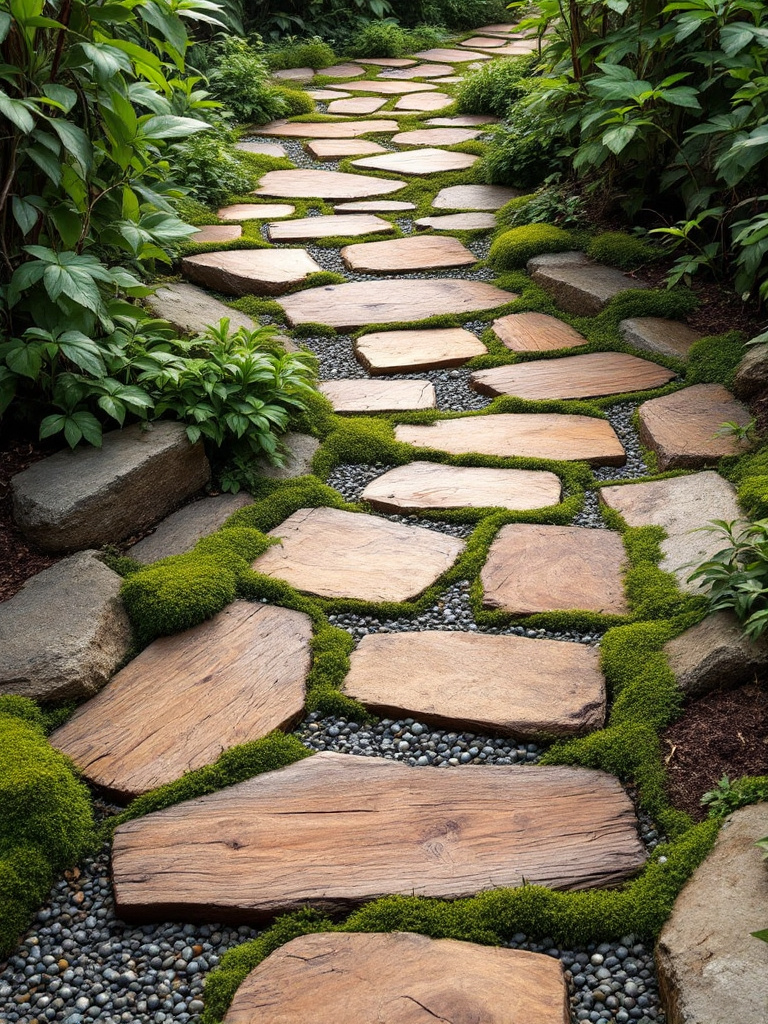
As you plan your DIY backyard hardscaping and landscaping project, keep these pros and cons in mind. The key is to strike a balance that enhances your outdoor living experience while also being mindful of the environmental impact.
Cost Considerations
When embarking on a backyard hardscaping project, understanding and planning for the associated costs is crucial.
Budgeting for Hardscaping
- Set Clear Goals: Define what you want to achieve with your hardscaping project.
- Prioritize Features: List all desired elements and rank them in order of importance.
- Research and Estimate: Gather rough estimates for materials and labor in your area.
- Include a Contingency Fund: Set aside 10-20% of your total budget for unexpected expenses.
- Consider Long-Term Costs: Factor in ongoing maintenance costs when budgeting.
Pro Tip: If your dream hardscape exceeds your current budget, consider phasing your project. Start with essential elements and add features over time as your budget allows.
Cost of Different Materials
- Natural Stone: $15-$30 per square foot
- Concrete: $5-$10 per square foot
- Brick: $10-$20 per square foot
- Wood (for decking): $6-$12 per square foot
- Gravel: $1-$5 per square foot
Interesting Fact: Using recycled or locally sourced materials can often reduce costs while also minimizing environmental impact.
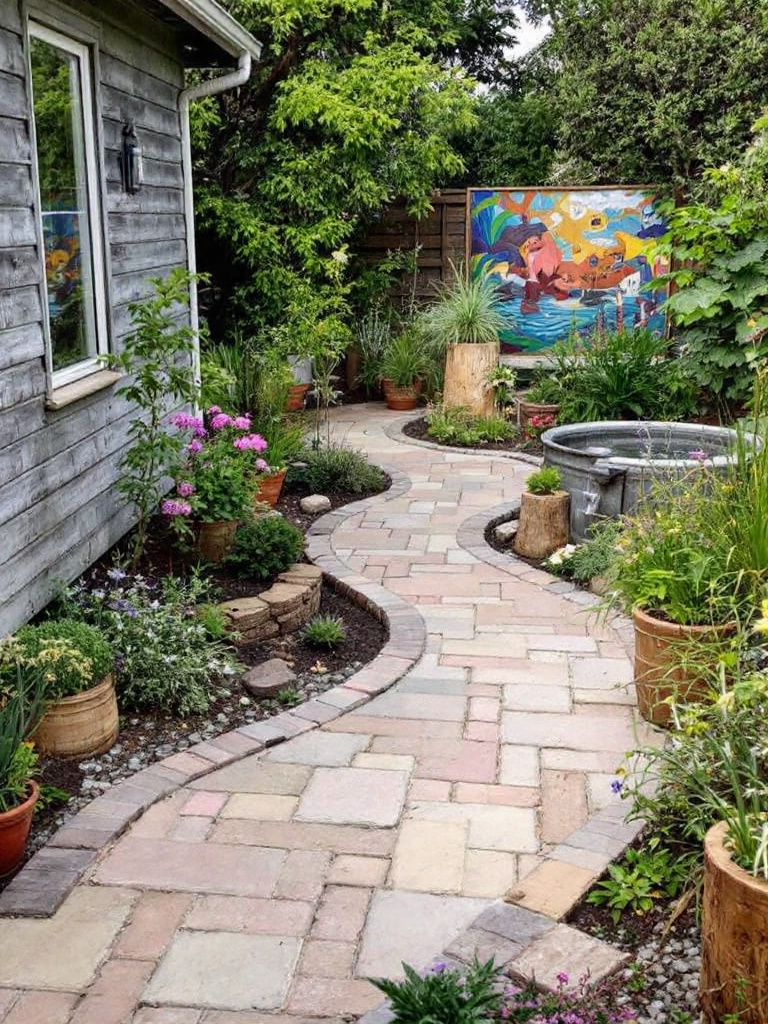
Labor and Installation Costs
Labor costs can significantly impact your overall budget and can vary based on project complexity and your location. Consider:
- Professional vs. DIY: While DIY can save on labor costs, it requires time, skill, and proper tools.
- Project Complexity: Intricate designs, challenging terrain, or the need for heavy machinery can increase labor costs.
- Regional Variations: Labor rates can vary significantly depending on your location.
- Seasonal Factors: Demand for hardscaping services often peaks in spring and summer, which can affect pricing.
- Additional Services: Consider costs for design services, permits, site preparation, and cleanup when budgeting for labor.
Pro Tip: When getting quotes from contractors, ensure they’re detailed and include all aspects of the job. This helps avoid unexpected costs and allows for accurate comparisons between different service providers.
As you plan your low-maintenance backyard features and hardscaping, balancing your design aspirations with your budget realities is key.
Closing Thoughts
As we wrap up our journey through the world of backyard hardscaping, I’m reminded of the transformative power of thoughtful design. Just as a well-planned city can enhance the lives of its residents, a carefully crafted hardscape can turn your ordinary backyard into an extraordinary oasis of comfort and beauty.
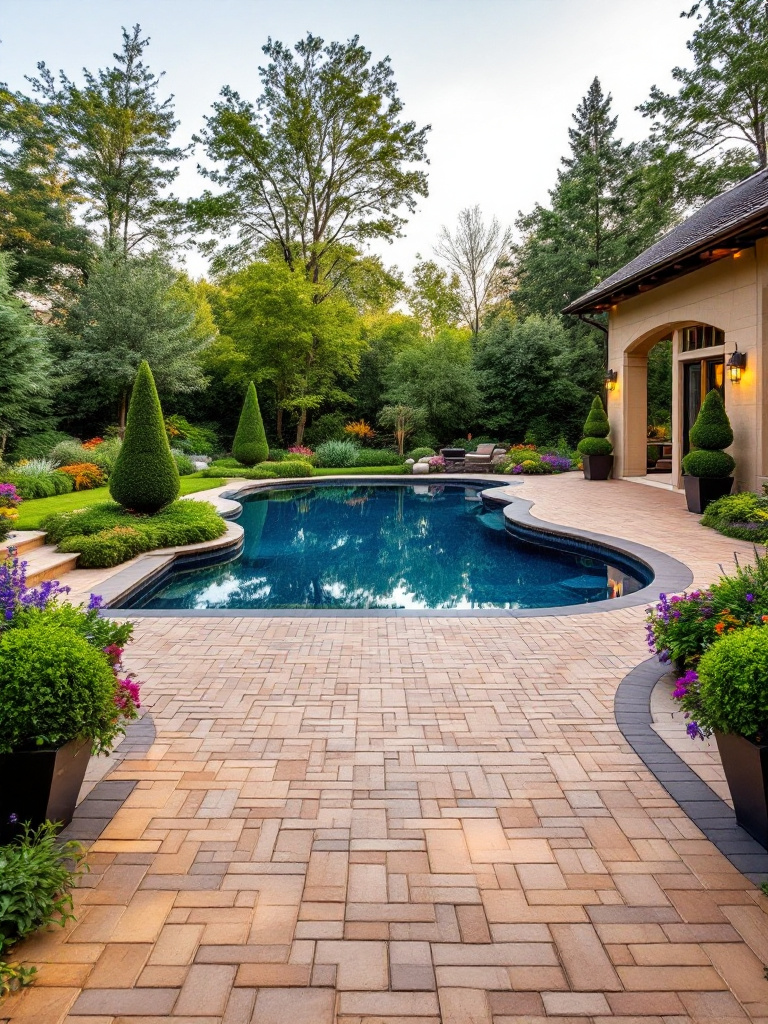
As you embark on your hardscaping adventure, keep these key takeaways in mind:
- Balance is Key: Strive for a harmonious blend of hardscape elements and natural features.
- Think Long-Term: Consider the longevity and maintenance requirements of your chosen materials and designs.
- Sustainability Matters: Incorporate eco-friendly practices like permeable surfaces and locally sourced materials.
- Personalize Your Space: Let your hardscape reflect your personality and lifestyle.
- Budget Wisely: Plan your project phases and allocate your budget thoughtfully.
Remember, the goal of hardscaping isn’t just to create a beautiful outdoor space—it’s to craft an environment that enhances your daily life, connects you with nature, and provides a sanctuary for relaxation and enjoyment. Whether you’re sipping morning coffee on your new patio, hosting a barbecue on your deck, or simply enjoying the view of your beautifully landscaped yard, a well-designed hardscape can elevate these everyday moments into something truly special.
So, take that first step. Sketch out your ideas, consult with professionals if needed, and start bringing your backyard oasis to life. With patience, planning, and a dash of creativity, you’ll soon be enjoying an outdoor space that’s not just an extension of your home, but a reflection of your lifestyle and values.
Here’s to the joy of creating, the satisfaction of seeing your vision come to life, and the countless memories you’ll make in your newly transformed backyard. Happy hardscaping!
